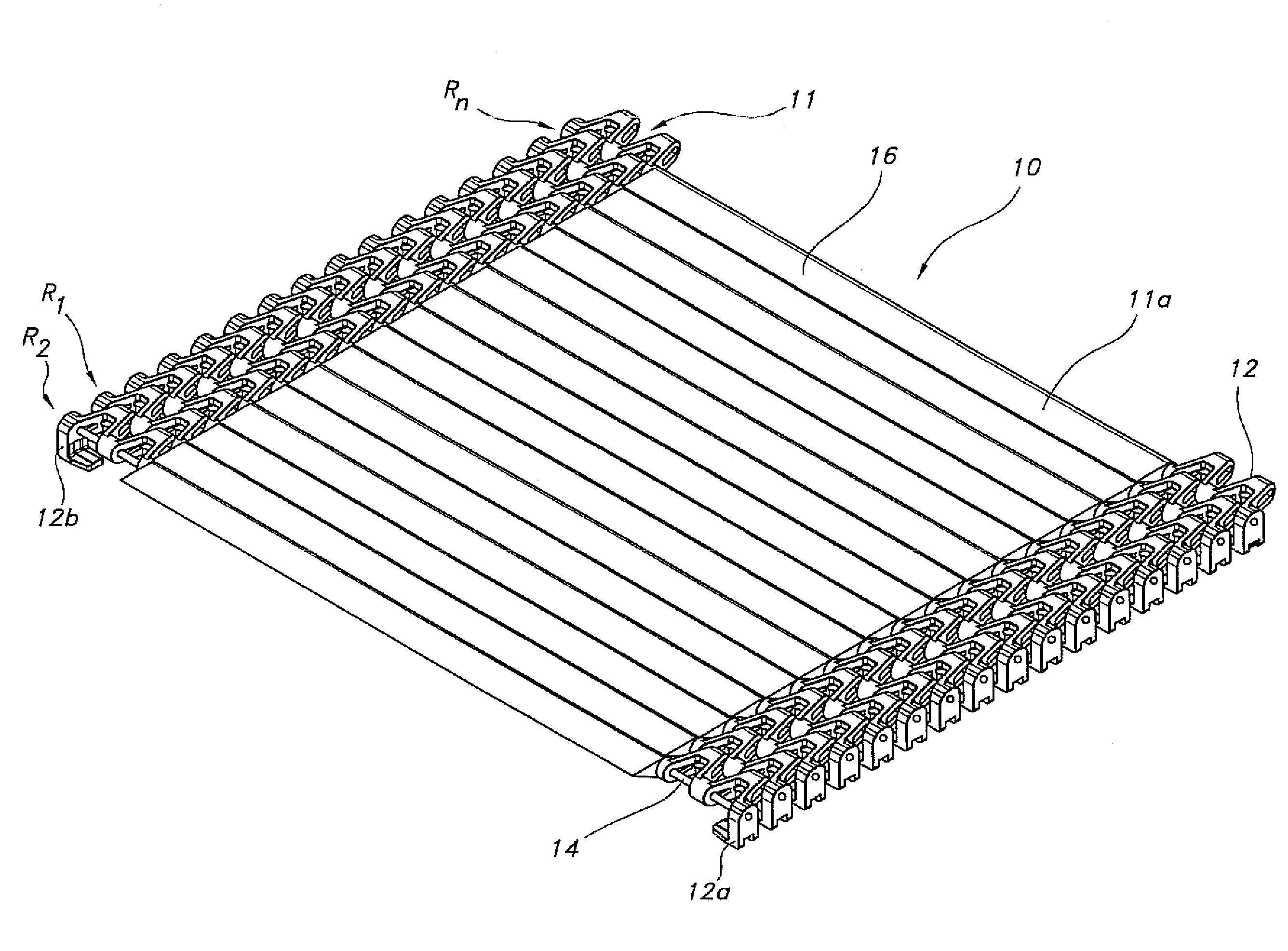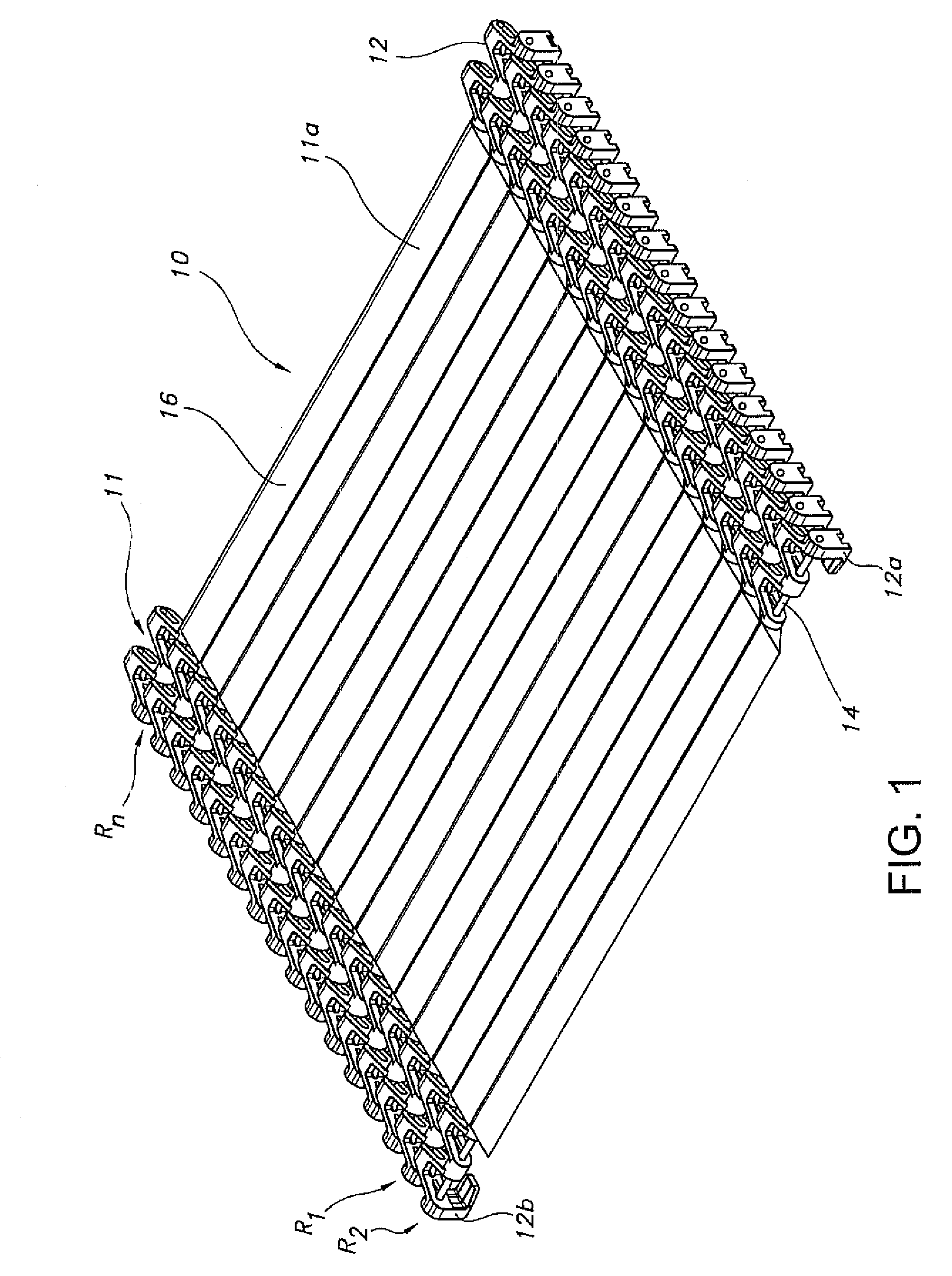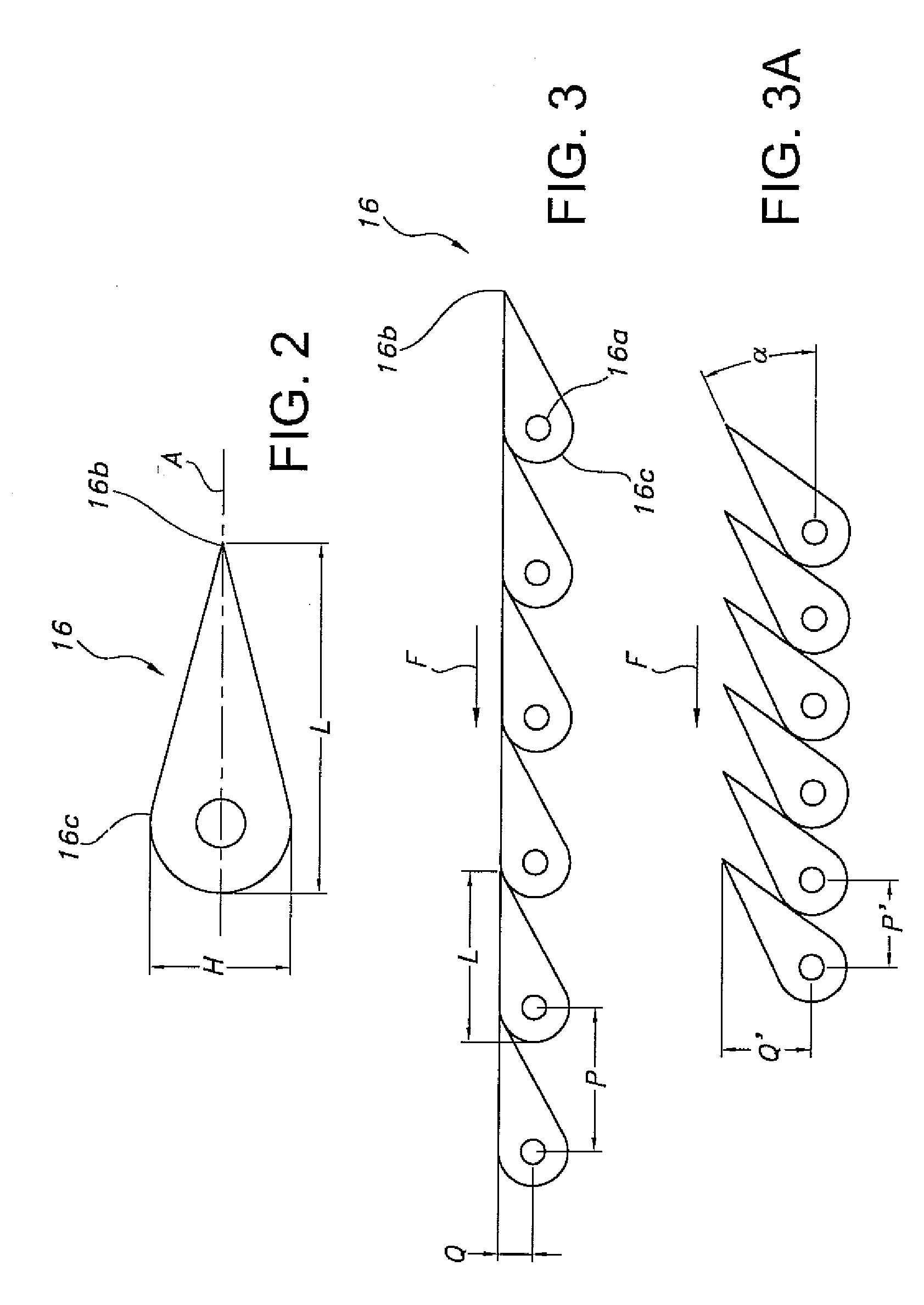Side-flexing conveyor chain with pivoting slats and related methods
a conveyor chain and slat technology, applied in the field of conveyor art, can solve the problems of affecting reducing the service life of the conveyor chain, so as to reduce the wear of the slats, and avoid direct frictional contact.
- Summary
- Abstract
- Description
- Claims
- Application Information
AI Technical Summary
Benefits of technology
Problems solved by technology
Method used
Image
Examples
Embodiment Construction
[0031]Reference is now made to FIG. 1, which depicts a conveyor belt or chain 10 including a conveying surface 11 for engaging and supporting articles. In this particular embodiment, the chain 10 comprises modular links in the form of side guide links 12 arranged in spaced apart rows R1 . . . Rn, which thus partially create the conveying surface 11. As should be appreciated, the chain 10 may form part of an overall conveyor system, which may include guide rails for guiding the chain as well as a drive system incorporating a sprocket or roller for driving the chain. In such a system, the chain 10 may be driven along an endless path between a forward run F and a return run N, which may be vertically offset or otherwise.
[0032]Adjacent rows R1, R2 of the side links 12 interconnect via transversely extending connectors 14, which are also referred to in the vernacular as “cross rods,”“hinge pins,” etc. Specifically, as shown in FIGS. 1, 7a, and 7b, each side link 12 includes a plurality o...
PUM
| Property | Measurement | Unit |
|---|---|---|
| thermal transfer | aaaaa | aaaaa |
| area | aaaaa | aaaaa |
| thermally conductive | aaaaa | aaaaa |
Abstract
Description
Claims
Application Information
 Login to View More
Login to View More - R&D
- Intellectual Property
- Life Sciences
- Materials
- Tech Scout
- Unparalleled Data Quality
- Higher Quality Content
- 60% Fewer Hallucinations
Browse by: Latest US Patents, China's latest patents, Technical Efficacy Thesaurus, Application Domain, Technology Topic, Popular Technical Reports.
© 2025 PatSnap. All rights reserved.Legal|Privacy policy|Modern Slavery Act Transparency Statement|Sitemap|About US| Contact US: help@patsnap.com



